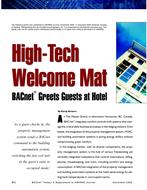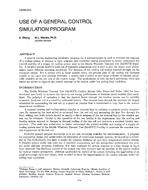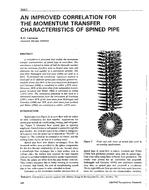Because the energy demand for cooling usually occurs when solar energy is most available, using solar energy as the main energy input for cooling system shows promise. A literature study of various available cooling technologies that can use solar energy as the main energy input shows that double-effect lithium-bromide/water (LiBr/H2O) absorption cooling systems give the relatively high performance that is needed for reduced collector areas. To further study double-effect LiBr/H2O absorption cooling system, a computer model of the system was developed. This model was than coupled with a model of a solar collector system. The performance of the system is presented as the solar fraction that is the ratio of the solar energy to the total energy needed for the cooling system. Results are shown for various sky clearness indices, average ambient temperatures, and collector area to cooling system capacity ratios.
KEYWORDS: year 1996, calculating, solar energy, lithium bromide, water, cooling, absorption refrigeration, performance, computers, solar collectors, ambient temperature, thermal capacity, ratios
Citation: ASHRAE Trans. 1996, vol.102, part 1, paper number 3943, 104-109, 8 figs., 2 tabs., refs.
Product Details
- Published:
- 1996
- File Size:
- 1 file , 700 KB
- Product Code(s):
- D-16519


